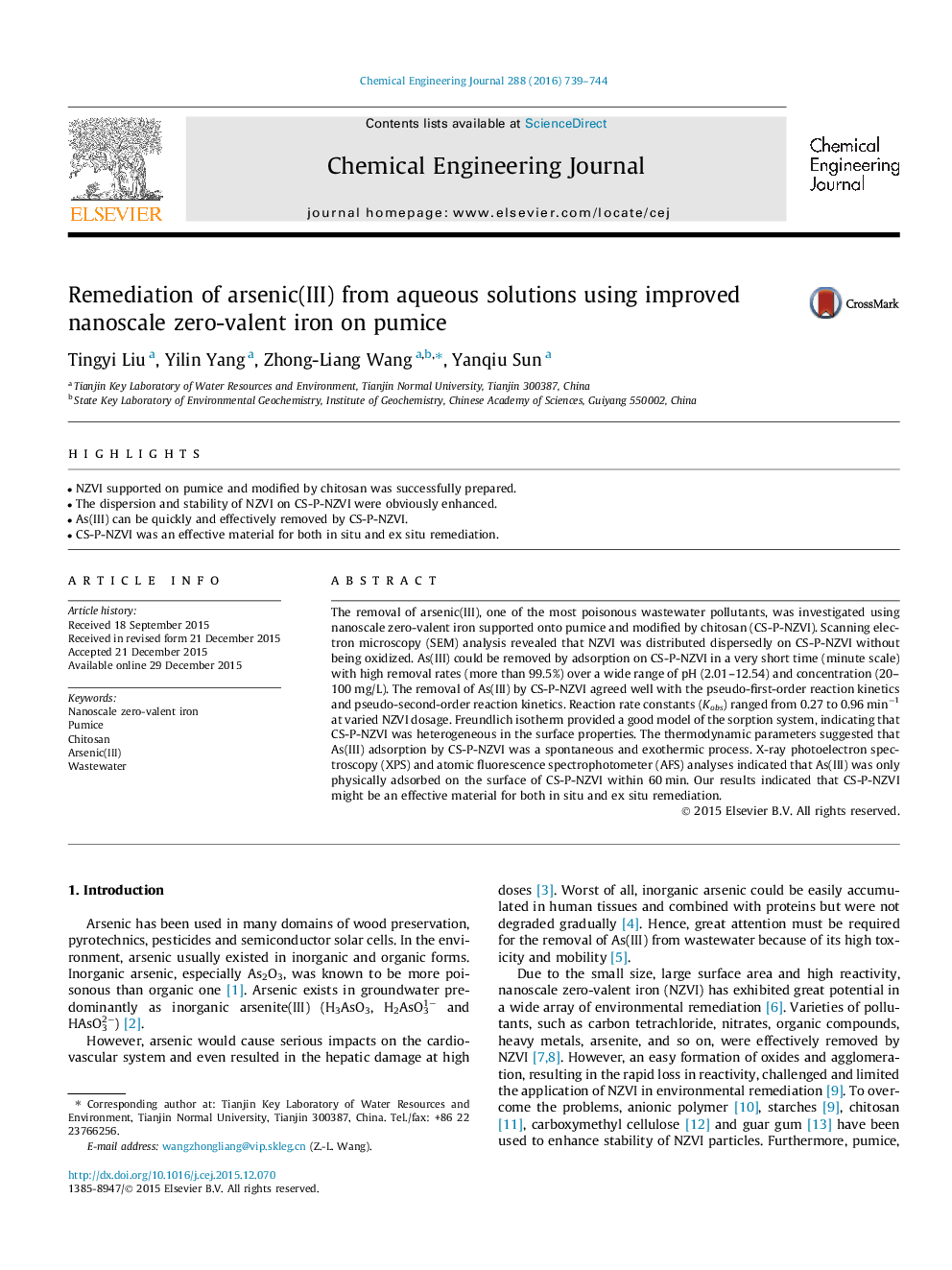| Article ID | Journal | Published Year | Pages | File Type |
|---|---|---|---|---|
| 6582226 | Chemical Engineering Journal | 2016 | 6 Pages |
Abstract
The removal of arsenic(III), one of the most poisonous wastewater pollutants, was investigated using nanoscale zero-valent iron supported onto pumice and modified by chitosan (CS-P-NZVI). Scanning electron microscopy (SEM) analysis revealed that NZVI was distributed dispersedly on CS-P-NZVI without being oxidized. As(III) could be removed by adsorption on CS-P-NZVI in a very short time (minute scale) with high removal rates (more than 99.5%) over a wide range of pH (2.01-12.54) and concentration (20-100Â mg/L). The removal of As(III) by CS-P-NZVI agreed well with the pseudo-first-order reaction kinetics and pseudo-second-order reaction kinetics. Reaction rate constants (Kobs) ranged from 0.27 to 0.96Â minâ1 at varied NZVI dosage. Freundlich isotherm provided a good model of the sorption system, indicating that CS-P-NZVI was heterogeneous in the surface properties. The thermodynamic parameters suggested that As(III) adsorption by CS-P-NZVI was a spontaneous and exothermic process. X-ray photoelectron spectroscopy (XPS) and atomic fluorescence spectrophotometer (AFS) analyses indicated that As(III) was only physically adsorbed on the surface of CS-P-NZVI within 60Â min. Our results indicated that CS-P-NZVI might be an effective material for both in situ and ex situ remediation.
Related Topics
Physical Sciences and Engineering
Chemical Engineering
Chemical Engineering (General)
Authors
Tingyi Liu, Yilin Yang, Zhong-Liang Wang, Yanqiu Sun,
